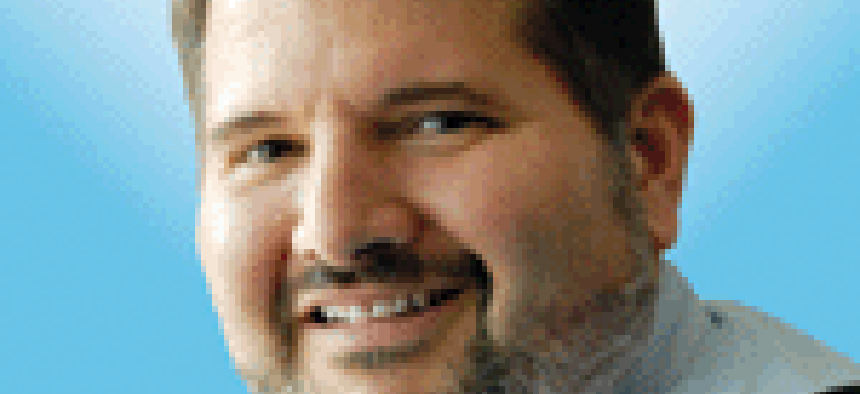5 takeaways from the Secrets of the Top 100

Our panel of Top 100 executives share their insights on success in the federal market, and it almost always comes down to people.
We’ve all worked on projects and fretted about their success. Especially when it is something new and seems risky.
But boy, when you are done and it comes off better than you hoped, you feel great. You walk on air for a bit.
That’s how I felt after our WT Power Breakfast: The Secrets of the Top 100 on Friday morning.
We had a great lineup of senior executives:
- Angela Heiss, president of civil for Leidos
- PV Puvvada, president of Unisys
- David Dacquino, CEO of Serco Inc.
- Bob Genter, executive vice president of civil for SAIC
- Kevin Phillips, president and CEO of ManTech.
These are no shrinking violets.
We talked strategy, trends and keys to success in the federal market.
Here are five takeways:
PEOPLE
Whether it was the competition to hire the right people or how you treat them once they are on board, each executive described this as a critical factor and a top priority for these leaders. Ten percent of ManTech’s employees are outside of the United States, and Phillips said he conducts video conferences and pushes out other forms of communications to keep them a part of ManTech.
Heiss spoke about how during the government shutdown, Leidos executives donated their leave so people could get paid. SAIC paid their people even if they weren’t able to work on customer sites.
TECHNOLOGY
This is a technology business, so of course it is important but as these executives escribe it, the technology supplements your people. It doesn’t replacement them. Technologies such as robotic process automation and machine learning are gaining traction and disrupting business models, and that brings opportunities. “We are looking for disruption,” Puvvada said.
FOCUS
As a company and as a leader of that company, you have to be able to articulate what your company is and what it does. This is critical for employees and for customers. It guides the decision making and the investment choices companies make. It helps companies decide what to bid on and what to walk away from.
DIFFERENTIATION
Heiss pushed back a bit on my contention that customers don’t see much difference from one contractor to another. She said the customers she talks to do see a difference but the key is talking to the customer at the right time. You can’t wait until the solicitation comes out. It’s too late then.
Genter said that differentiation is a challenge, especially when bidding on the large contracts. Contracts in the $300 million and above generally have a significant commodity portion. That makes differentiation a challenge. But smaller contracts bring more opportunities to innovate and differentiate.
KNOW YOUR FILTER
A lot of companies talk about diversity but often they take what Dacquino called the Noah’s Ark approach – you hire people of color, ethnicity, gender, etc. “Then you say look, we have diversity,” Dacquino said. “But it isn’t about that.”
“Diversity is really hard work and it is about listening to all the voices in your company and bringing in people that are different and making them feel comfortable with their difference and valuable,” he said.
You don’t change culture but you change behaviors and only when behaviors change do cultures change.
“For me, its’ about understanding that we all grew up differently and with that difference we have a filter. Your filter is built in because of who you grew up with,” Dacqiuno said. “I grew up in an old fashioned Italian family in a Puerto Rican neighborhood in New York. To me that was normal. That put filters on me. The key is you don’t let those filters become a bias, or at least you understand that you have a bias.”
Companies need diverse teams of people to take counteract those biases and take them off the table.
“It’s a critical program for us. We apply it to our internships and our company rotations,” he said. “We have executives and employees rotating through the company because it helps them get a broader view.”
One last observation – whether they were talking workforce issues, technology or strategic focus, all these executives circile back to people, both their employees and their customers.


